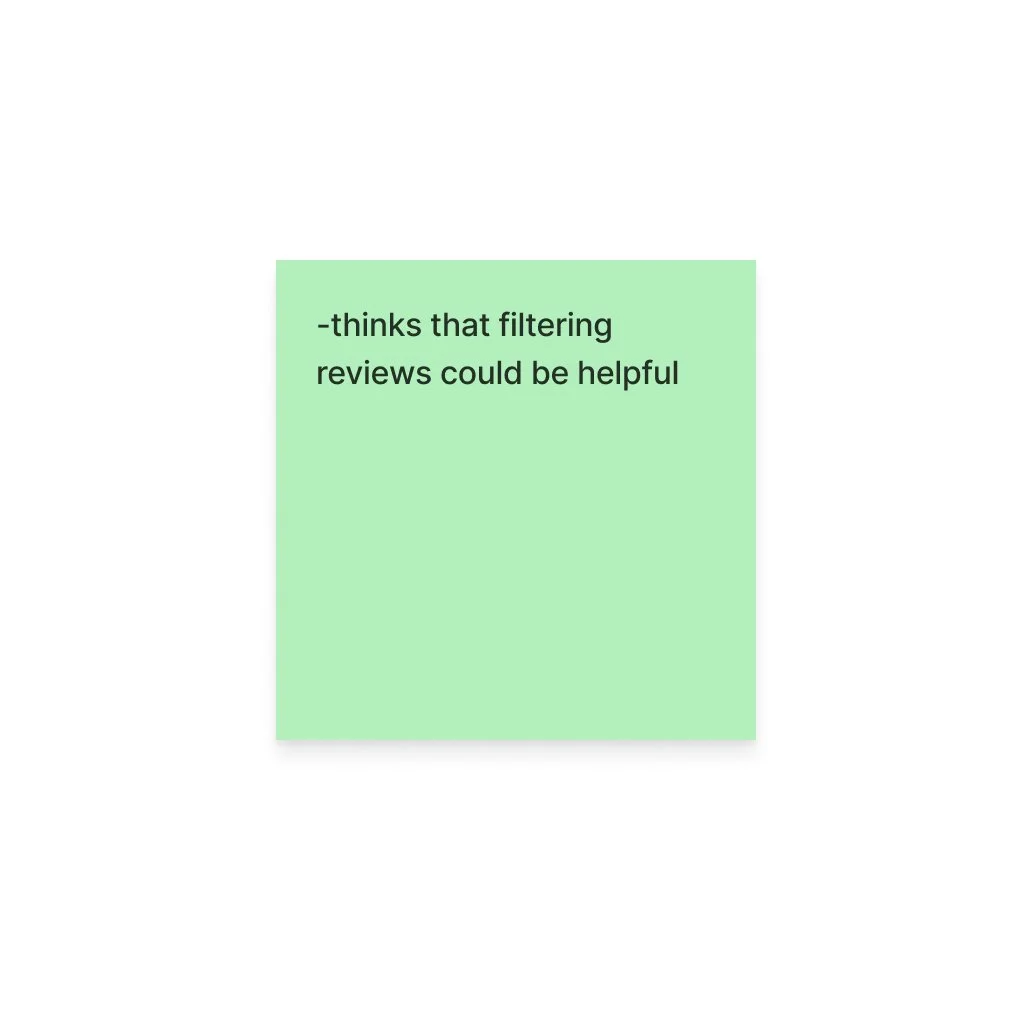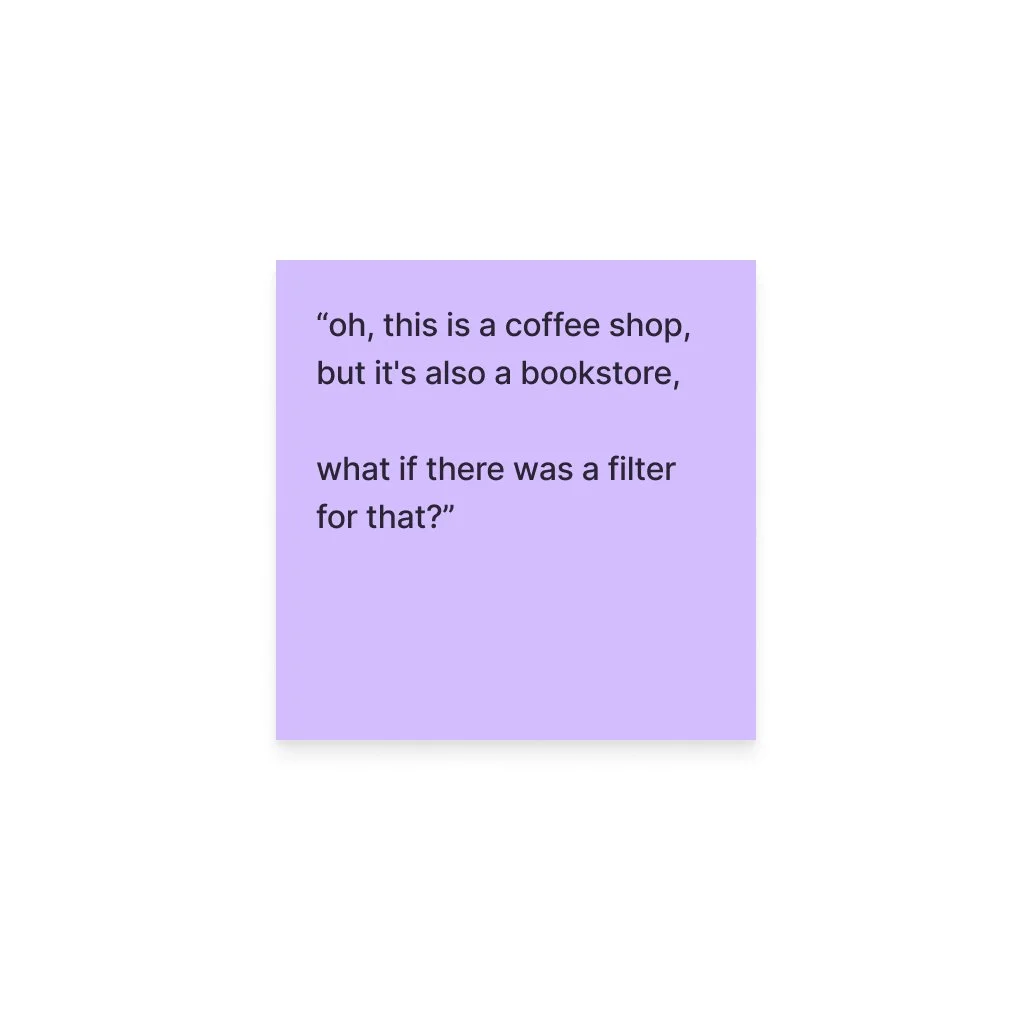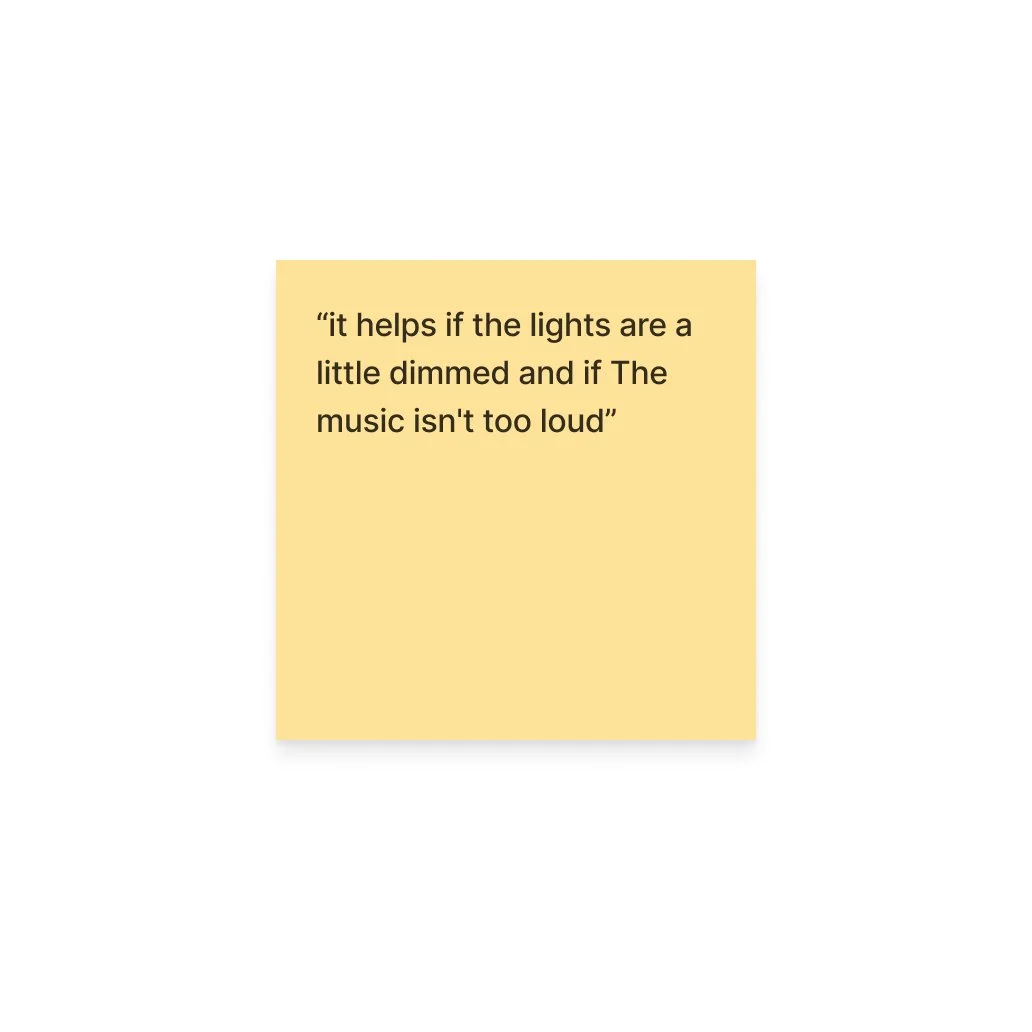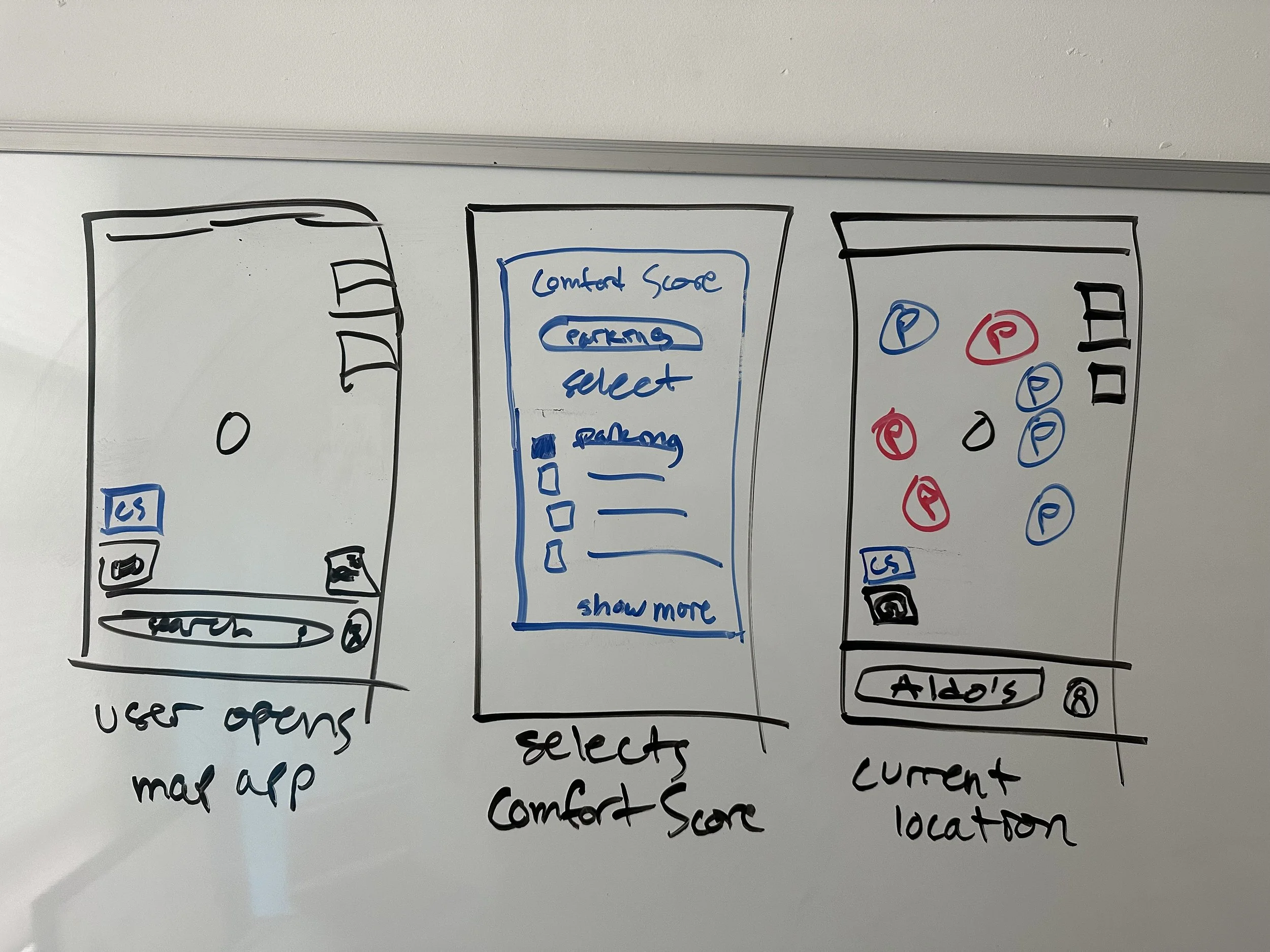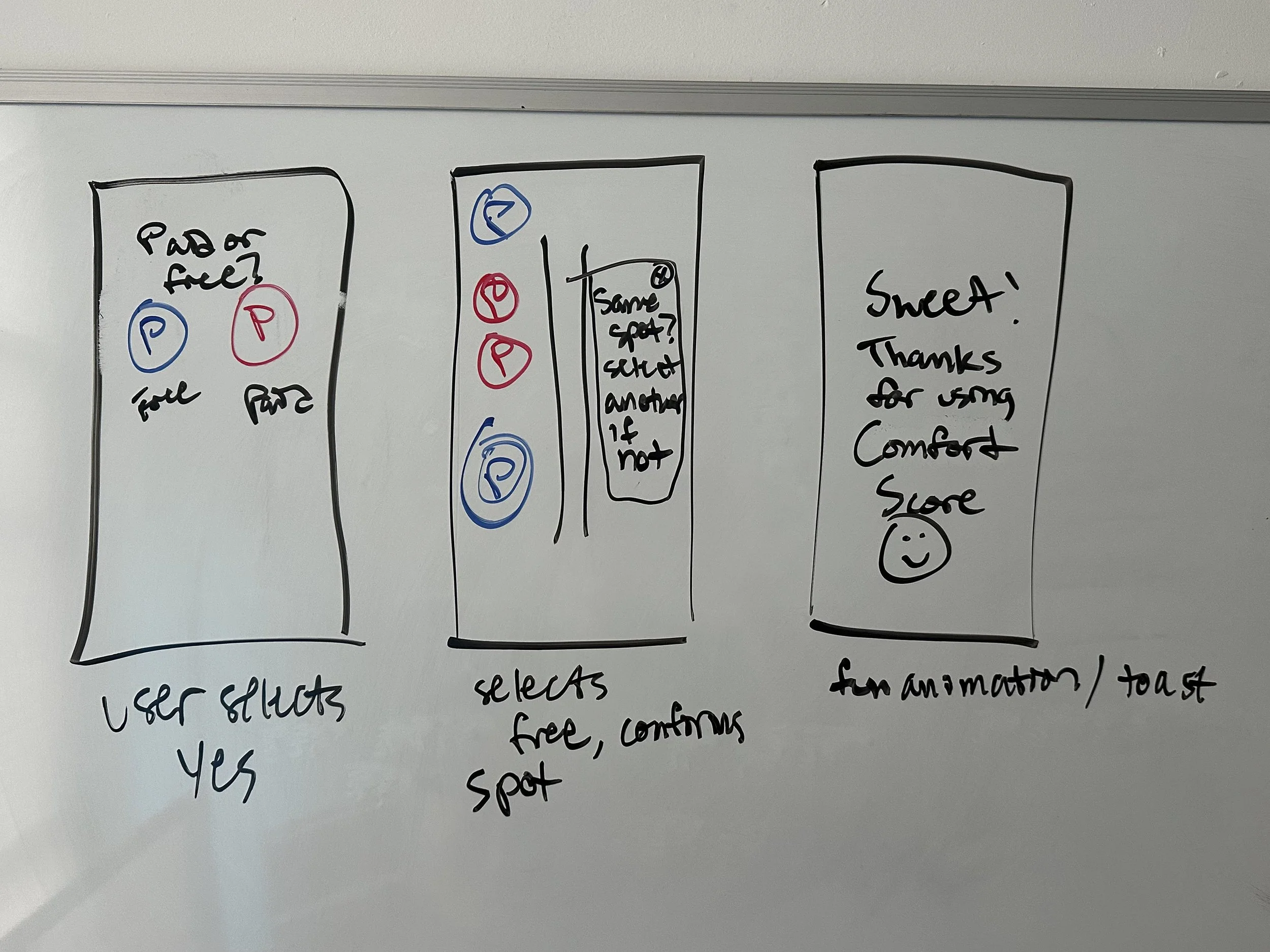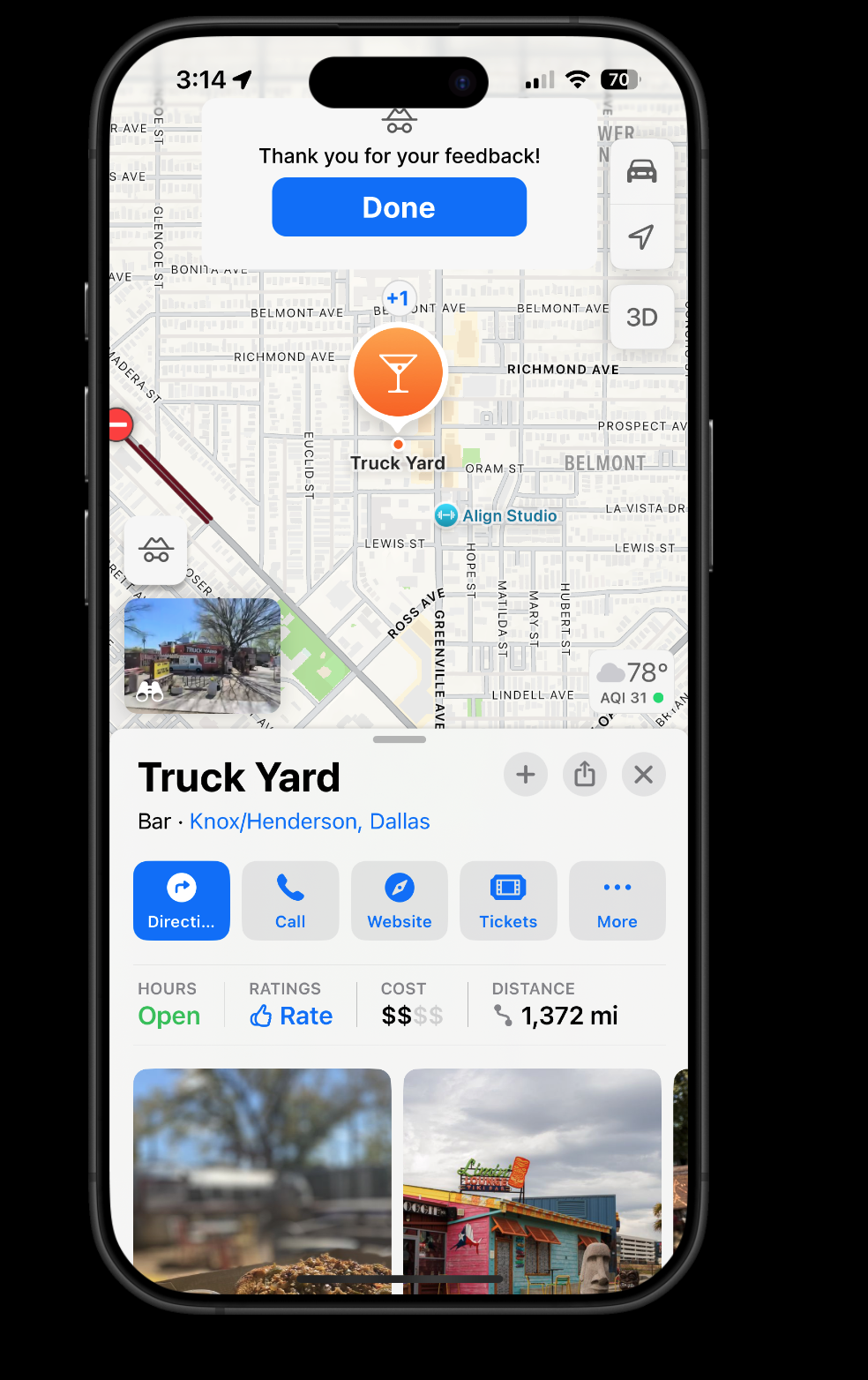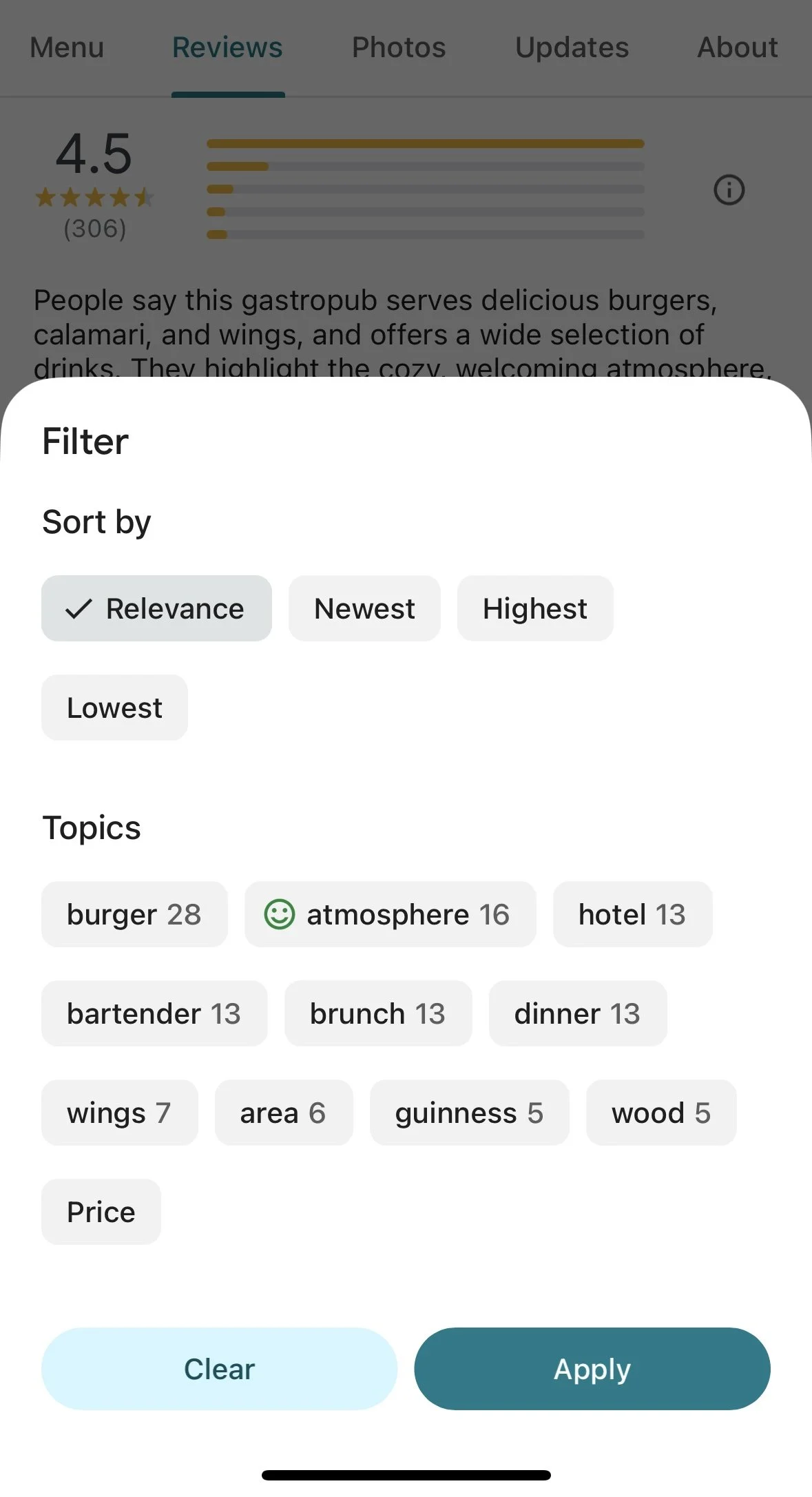Scout for Apple Maps
Introducing a meaningful feature to an existing product—Apple Maps—by identifying a real user needs and interests and building a solution from concept to high-fidelity prototype.
Timeline:
4 weeks
Role:
UX/UI Designer
Tools Used:
Figma
Google Meet
Calendly
Maze
Finding a Problem: One thing missing…
You want to try a new coffee shop and it’s a 20 minute journey…or longer depending on traffic and whatever the parking situation is like.
When you arrive everything appears to be in order like you saw on your map app. Place isn’t too busy, has AC, there’s seating available and they have a bathroom. Sweet, let’s post up.
Upon enjoying the first sip of your coffee and taking out your laptop you realize that there is one thing you did need that isn’t there…an outlet.
Small detail, but you need it and it isn’t there. Also…why is the music so loud? You also notice as you refer back to your map app, to take a new shot in the dark. What is the next place going to be missing? Should we just call it and go home?
First, I conducted a competitive analysis of similar sites that are well known for their filters and reviews. I interviewed 5 participants remotely to identify key patterns on the details why and how people use digital maps—and what’s missing from the experience.
Key Findings:
People use maps not just for directions but to decide where to go and what to expect.
Trust is often built through word-of-mouth, social media, or visuals online.
Google & Apple Maps reviews are helpful but often unreliable, outdated, or biased.
Users want a holistic picture of a place, not just what’s there, but how it feels.
There is a 50/50 split between Apple & Google maps.
The core opportunity emerged from a shared pain point: How do you “read” a neighborhood without physically being there?
While Google & Apple present the amenities that a business has to offer, it is not formatted in a way for users to filter out which information is being listed (or a description on what some amenities mean).
For this project, I anchored the experience around everyone who is trying to scout places out to their specific need.
I prefer to sketch ideas first before diving into Figma to establish the core user flow.
As you can see in the sketch, I initially named this feature "Comfort Score." I drew inspiration from other apps and services to create familiar visual cues that would signal to first-time users that this feature helps narrow down destinations based on specific needs.
One key challenge at this stage was designing the feedback submission flow. After users arrive at their destination and experience amenities like parking, noise levels, or ambiance, I needed to create a simple, frictionless way for them to complete this step and contribute to accurate scoring for future users.
Research & Insights
A closer look at how goals aligned.
Design Goals & Strategy
The simple goal of Scout is to serve as a new tab within Apple Maps that helps users filter through the amenities of every business on the map!
Scout blends editorial content, visual highlights, and real local input to provide a pre-exploration lens.
My strategy prioritizes effortless discovery, integrating naturally with Apple’s ecosystem while keeping the experience visual, quick, and exploration-focused.
Wireframing to Prototype
Five participants took part in a moderated lo-fi test and two participated in an unmoderated test.
Main feedback:
-Users were confused by “Score” on filters page, suggested to play with wording. The first flow was the most difficult for users, scoring below 70%.
-Feedback flows for users once they arrived at their destinations scored on average around 100%.
Overall, the core concept remained strong despite iterations from "score" to "scout." For this feature to reach its full potential, I would need to refine my Figma files further, along with additional testing to ensure it truly matches the look and feel of Apple's design system.
Once the files are refined and further testing is complete, securing a software engineer for implementation and maintenance would be the next priority.
Helping users discover their most valued amenities on Apple Maps reinforced how small design decisions can drive engagement, enhance trust, and improve usability. Real users highlighted the need for clear terminology and simplicity when discovering and using the Scout feature—solutions should feel intuitive and effortless.
This project reaffirmed that great design isn't just about solving problems; it's about crafting experiences that build lasting trust.
Thanks for reading!
User Testing
In the first hi-fi design, I tried to place the icon on top of the live map view, but users weren’t noticing it there.
Outcome & Next Steps
The original design was based off of Google, this was not translating well for users. So I decided to switch to Apple for hi-fi testing and find an icon that matched my “Comfort Score” concept and turned it into “Vibe Scout”!
Once I moved the icon to the business page, users scored over 90% on ease.
After further testing, I found that I needed to simplify the choices and change the colors a bit in the feedback flows, despite high scores of ease.


